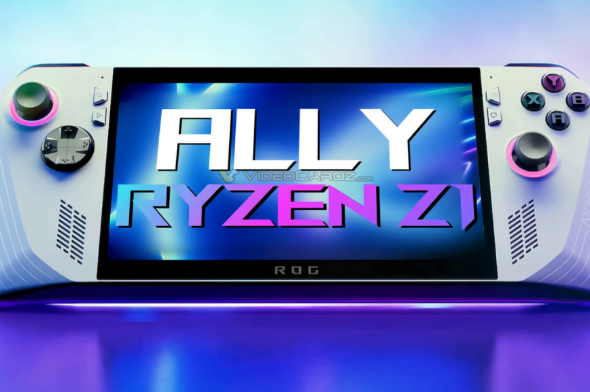Connection to DriversCloud Create a DriversCloud.com account Reset your DriversCloud.com password Account migration
The "light" version of the ROG Ally far less powerful than its big sister
A second handheld console from ASUS that, alas, seems to lag a little too far behind in terms of performance.
Barely a fortnight ago, ASUS announced the release of a second version of the ROG Ally, its portable console competing with Valve's Steam Deck. This second version should enable ASUS to position itself better in relation to the Steam Deck, since the ROG Ally launched last June is certainly more powerful, but also significantly more expensive. The only notable difference between the two ROG Ally models is the replacement of the Z1 Extreme processor by the Z1, since both chips are obviously designed by APU specialist AMD.
This difference in processor enables ASUS to reduce the price of its console, since the Z1-based "light" version is priced at 699 euros, whereas the manufacturer charges 799 euros for the ROG Ally Z1 Extreme. The ROG Ally and the Steam Deck are very similar in terms of hardware configuration: 16 GB of RAM and a 512 GB SSD, for example. It remains to be seen whether the Z1 processor will not handicap the ROG Ally too much.
In this respect, we have the beginnings of an answer ina publication by ASUS itself. ASUS has published two graphs, each featuring a different game to contrast the two versions of the ROG Ally: Elden Ring, FIFA 23, Cyberpunk 2077, Call of Duty: Modern Warfare II, Forza Horizon 5 and Diablo IV. Above, the games are compared in 720p with Turbo mode and the machines plugged into the mains. Under these conditions, we can expect gains of around 30% by switching to the ROG Ally Z1 Extreme, but on the second graph - same tests, but in 1080p - the gains offered by the Z1 Extreme are more like 37%.
Some will see this as a normal, almost slight difference between the two ASUS machines. The problem is that we need to look further, and this gap is above all a sign that the Steam Deck achieves better performance than the ROG Ally with the basic Z1. The Steam Deck would therefore be less expensive, yet more powerful. Admittedly, the ROG Ally is a little lighter and a little less bulky, but that may not be enough to convince gamers.








